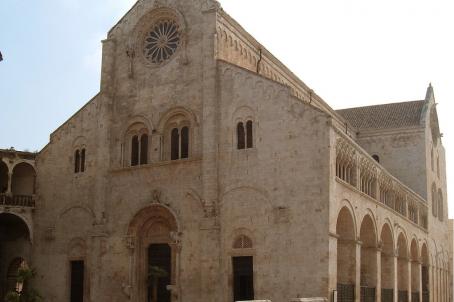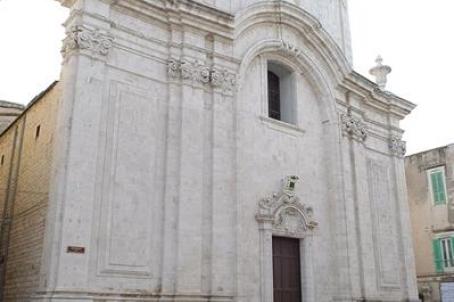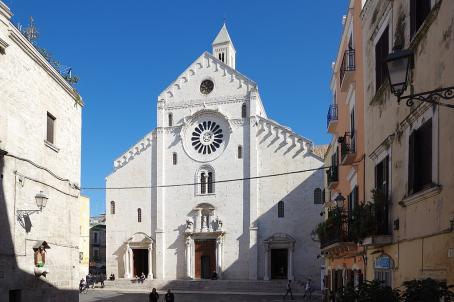Bitonto Cathedral
The cathedral of Bitonto is an Apulian Romanesque church built between the 11th and 12th centuries. It has acquired its cathedral status in 1986. The church was modeled after the Basilica of San Nicola di Bari.
The cathedral of Bitonto is an Apulian Romanesque church built between the 11th and 12th centuries. It has acquired its cathedral status in 1986. The church was modeled after the Basilica of San Nicola di Bari.

Bitonto Cathedral, since 1986 strictly speaking a co-cathedral, was built in the centre of the city between the 11th and 12th centuries. The building, in the Pugliese Romanesque style on the model of the Basilica of St. Nicholas of Bari, is considered to be the most complete and mature expression of Pugliese Romanesque art, in particular, because of its richly carved portal and rose windows.

Molfetta Cathedral was built by the Jesuits in the 17th century and dedicated to their founder, Ignatius of Loyola. It was started in 1610 and was not completed until 1744 with the construction of the façade. With the suppression of the Society of Jesus in 1767, the church remained abandoned for some time until 1785, when it was duly restored, enlarged and erected as a new cathedral. On this occasion, the relics of the city's patron saint, St. Conrad of Bavaria, were transferred to the new cathedral.

The present cathedral of Bari dates back to the 12th-13th century. It was built on the ruins of a cathedral of Byzantine origin, destroyed by William I of Sicily (1154-1166). The materials of the previous church and other destroyed buildings were used for the construction of the present building. Consecrated on October 4, 1292, the church was inspired by the style of the Basilica of St. Nicholas.